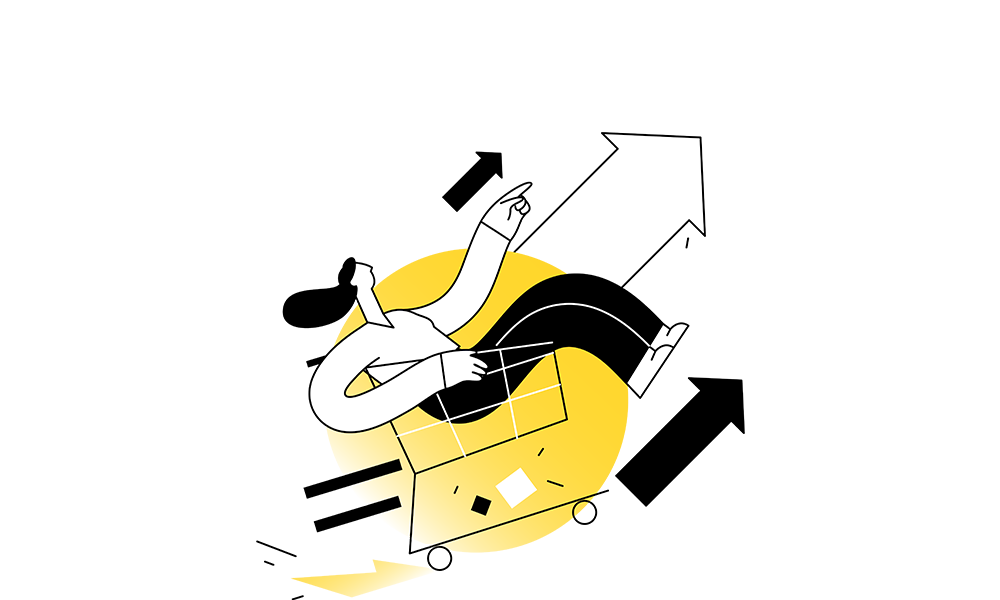Your final deliverable for your latest sale was accepted, and you’re excited to see its impact on your bank account. You take a look and find that nothing has really changed. You’re feeling a little discouraged. This was a big sale, and you were hoping the payout would add some cushion to your cash flow. Here’s the deal: making more sales doesn’t necessarily mean more money in your bank account.
You didn’t take into account your profit margin.
We all know that you need to make a profit in order to level up in your liquidity. Without profit, you’re staying right where you’re at. But your profit is only a fraction of the money you make from sales. Let’s say you have a 20% profit margin. If you bring in $1,000 in sales, you’re only making a $200 profit. Even though your sales are bringing in a lot of money, most of it doesn’t stay in your bank account.
That’s assuming you make a profit. All sales come with costs. If you’re lucky, you’ll meet your anticipated profit. If you’re unlucky, you may not break even. Whether or not you’ll walk away with a profit depends on the circumstances of the sale.
You have to spend money to make money.
Growth eats cash. An increase in sales will increase your cash inflow, but it also comes with an increased outflow. You’ll have to cover direct costs like labor, materials, inventory, and production before you can complete your end of the deal and get paid by your customer. On some occasions, these necessary costs must be made in advance, like ordering inventory or hiring subcontractors. If you haven’t received any payments yet, these costs come straight out of your pocket.
Your outflow could go beyond these direct costs. If you’re familiar with this type of project, you know there will likely be unexpected expenses and start-up costs. If a project is new to you, you might incur underlying expenses related to this bump in growth and reach. These could be in the form of management, process, organization, or relationship costs. These costs are sometimes hidden, and often overlooked when you make a sale.
You haven’t optimized your terms.
Cash is king. Say you have an exciting deal with a new client. Your profit margin is smaller than usual for this project, but it could be your business’s opportunity to level up. Instead of your normal 30%, you’re taking 20%. You are so psyched for this client that you overlook a few things, like when you’re getting paid and who you have to pay before you dive in. Assuming you get 50% up front at a 20% profit margin, that’s still an extra 30% out of your pocket in advance.
To spread out the impact of your cash flow, negotiate your terms.
Be strategic with your customers. You want them to pay you as much as possible, as often as possible, as soon as possible. You can make this happen by negotiating for more money up front and spreading out your payment terms. Instead of two milestones, make it ten. Make sure they pay you on time, and make it easier for them to pay you.
Be strategic with your contractors and suppliers. Negotiate with your vendors for longer terms. Instead of paying in 15 days, extend the due date to 30 or 45 days out. Ask the contractor to share the risk—they won’t get paid until you do. While you’re at it, ask for payment plans and the flexibility to pay in several increments. The end goal is to spend the least amount of money possible before cash starts flowing in.
There are several things to consider before you sign a contract.
An increase in sales doesn’t necessarily mean more profit, but it could mean more opportunities in the future. Before you sign the contact, ask yourself:
- Are you making a profit off of this deal? Consider how much money you’re going to bring in and how much you’re going to have to spend on direct and indirect costs. Are you going to be able to cover the costs that aren’t covered by deposits? Are you ultimately making money or losing it?
- Is it profitable? If not, why? Maybe you’re underselling yourself, or you aren’t asking for enough money. Are you willing to take the loss? Are you committed to this project because you believe the opportunity is greater than the money? It’s fine either way, but it’s important to be clear and make these decisions intentionally.
- Are the terms of the deal strategic enough to keep cash in your bank account? Are you going to be burning cash?
- When are you going to run out of money? Create a cash flow projection for the deal based on your terms, what and when your customers are paying, what expenses you’ll be paying and when. Take into consideration both direct and indirect payments, and add a buffer for unexpected costs. If at the end of the day you see a negative value, you’ll know when you’re going to start eating your cash.
- Can you afford it? Do you have enough in your bank account to cover any start-up costs? Do you have any other deals in the works that you need to cover costs for?
- Does your business have enough elasticity to take on this deal? Dive deep and evaluate your team, process, and organization. Your scalability is like a rubber band. If you stretch it to accommodate this sale, will it snap or bounce back? Do you have enough people with experience in this type of work? Will you have to do a lot of leg work to get organized? Are there costs other than the money? Consider how this deal will impact morale and focus within your business.
Share this article




